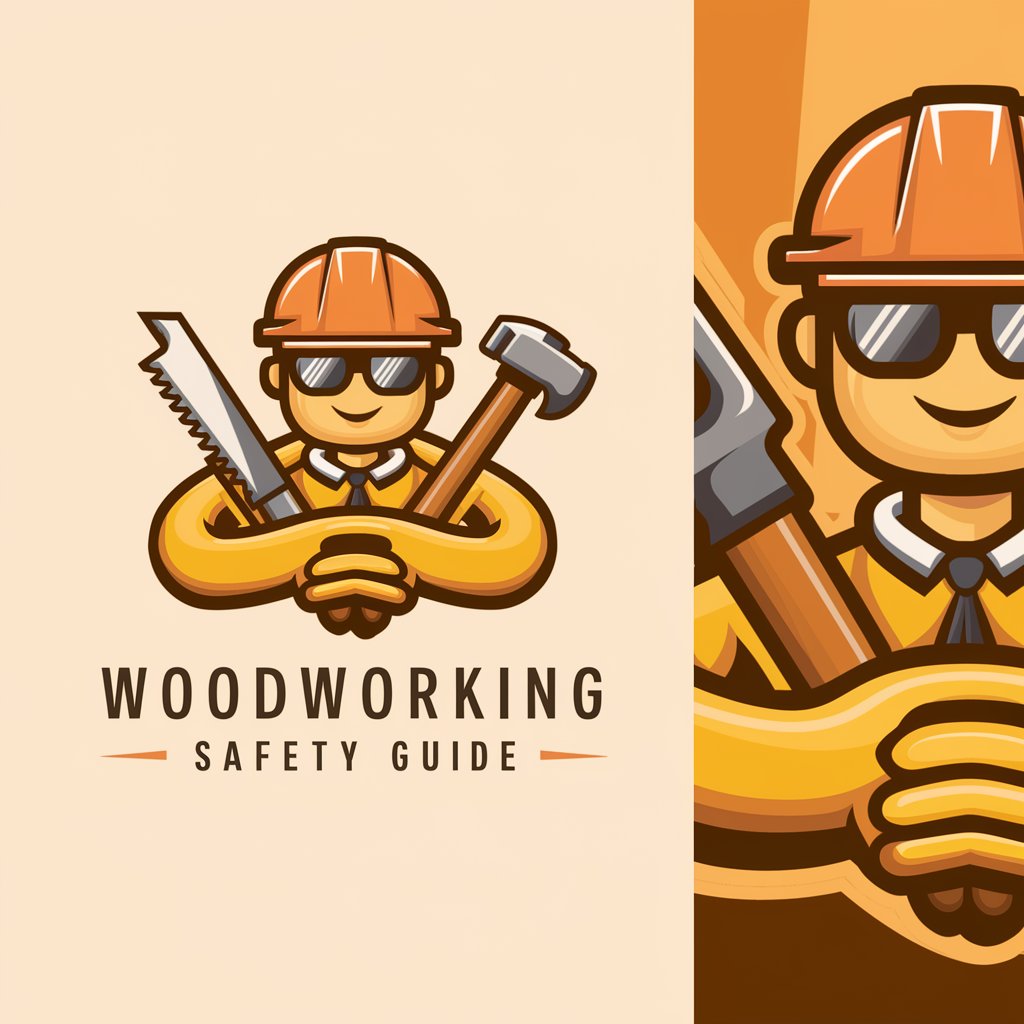Woodworking Safety Guide - Woodworking Safety Insights

Welcome to the Woodworking Safety Guide!
Empowering Safe Woodworking with AI
What safety tips do you recommend for using a table saw?
Can you guide me on how to set up a safe woodworking workshop?
What personal protective equipment is essential for woodworking?
How can I ensure my power tools are maintained for safe use?
Get Embed Code
Understanding Woodworking Safety Guide
The Woodworking Safety Guide is a specialized assistant designed to offer comprehensive safety advice for individuals engaged in woodworking. Its core purpose is to educate on the safe handling of woodworking tools, the proper setup of a woodworking workshop, and the importance of personal protective equipment. It aims to mitigate the risks associated with woodworking activities by providing detailed guidance on practices that ensure safety. For example, it could elaborate on the correct way to use a table saw, including the use of push sticks and feather boards to maintain a safe distance between the hands and the blade, or advice on the optimal layout of a workshop to reduce the risk of accidents. It also emphasizes the importance of dust collection and ventilation to minimize health risks from wood dust inhalation. Powered by ChatGPT-4o。

Key Functions of Woodworking Safety Guide
Tool Safety Education
Example
Detailed instructions on the safe use of power tools, such as table saws and routers, including techniques to prevent kickback.
Scenario
A beginner woodworker learning to use a table saw safely, using guides on blade selection, cutting techniques, and the importance of using safety accessories like splitters and anti-kickback pawls.
Workshop Setup and Safety
Example
Guidance on efficient workshop layout that prioritizes safety, including the placement of equipment and storage to minimize trip hazards and ensure easy access to safety equipment.
Scenario
An individual setting up a new woodworking shop seeking advice on the best layout for their tools and workstations to ensure a safe working environment, including the strategic placement of fire extinguishers and first aid kits.
Personal Protective Equipment (PPE) Recommendations
Example
Advice on the necessary PPE for various woodworking tasks, such as safety glasses, hearing protection, and dust masks, and how to choose the right items for specific projects.
Scenario
A woodworker preparing to undertake a project that involves a lot of sanding and wants to know the best type of respiratory protection to prevent inhalation of fine dust particles.
Who Benefits from Woodworking Safety Guide?
Beginner Woodworkers
Individuals new to woodworking who need foundational knowledge on safe practices, proper tool handling, and workshop safety. They benefit from step-by-step guides and basic safety protocols to build their skills safely.
Experienced Woodworkers
Seasoned craftsmen seeking to update their safety knowledge or learn about new tools and techniques. They can benefit from advanced safety tips and best practices to prevent complacency and ensure their methods remain up to date.
Woodworking Educators
Teachers and instructors who provide training in woodworking. They can use the guide as a resource to teach safety protocols and ensure their students learn to prioritize safety while working on projects.

How to Use the Woodworking Safety Guide
Start for Free
Access the Woodworking Safety Guide with no sign-up required by visiting yeschat.ai for an immediate, free trial.
Identify Your Needs
Consider what you need help with in your woodworking projects, such as tool safety, workshop setup, or personal protective equipment.
Engage with the Guide
Use specific questions or describe your woodworking scenario to get tailored advice and safety tips.
Apply the Advice
Implement the safety recommendations and best practices in your woodworking activities to ensure a safe working environment.
Continuous Learning
Regularly consult the guide for new insights and to stay updated on safety protocols as you advance in your woodworking skills.
Try other advanced and practical GPTs
Face Reader Plus
Unlock the secrets of your face with AI

Ask Fat Jon
Grill Smarter with AI-Powered BBQ Guidance

数学 I A の優しい先生
AI-Powered Math Teaching Made Easy

Code Companion - Next Stack
Elevate Coding with AI-Powered Insights

Le Chat
Reflect, laugh, and grow with AI wisdom

Map
Navigate the World with AI-Powered Maps

Amazing PPT
Structure Your Success with AI-Powered Presentations

Font Finder GPT
Discover the perfect font with AI

DeeplTranslation
Bridging Worlds with AI-Powered Language Translation

DocuMentor by Mojju
Refine documentation with AI precision.

Who Me
Turn Your Photos into Whoville Wonders

Friends from Oz
Bringing Oz's Characters to Life

Frequently Asked Questions about the Woodworking Safety Guide
What safety equipment is essential for beginners?
For beginners, essential safety equipment includes safety glasses or goggles, hearing protection, dust masks or a respirator, and proper work gloves. It's crucial to protect your eyes, ears, and lungs from common woodworking hazards.
How do I maintain a safe woodworking environment?
Maintaining a safe woodworking environment involves regular cleaning of dust and debris, ensuring adequate ventilation, keeping tools properly maintained and sharpened, and organizing your workspace to prevent tripping or accidents.
Can the Woodworking Safety Guide help with tool selection?
Yes, the guide provides advice on selecting the right tools for your projects, focusing on safety features, ergonomic design, and suitability for your skill level and project complexity.
Is there advice for handling power tools safely?
The guide offers comprehensive tips on using power tools safely, including proper handling, usage of safety guards, and the importance of using the right tool for the job to minimize risks.
How can I improve my workshop's safety?
Improving your workshop's safety can involve installing proper lighting, using non-slip mats, organizing tools and materials for easy access without clutter, and ensuring all electrical tools are properly grounded.
